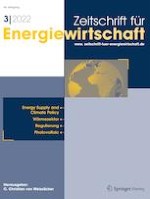26-09-2022
Enhancing Understanding of Geographical Adoption Patterns of Residential Rooftop Photovoltaic Using a Consumer Segmentation Model—A Case Study in Saxony, Germany
Published in: Zeitschrift für Energiewirtschaft | Issue 3/2022
Log inActivate our intelligent search to find suitable subject content or patents.
Select sections of text to find matching patents with Artificial Intelligence. powered by
Select sections of text to find additional relevant content using AI-assisted search. powered by
